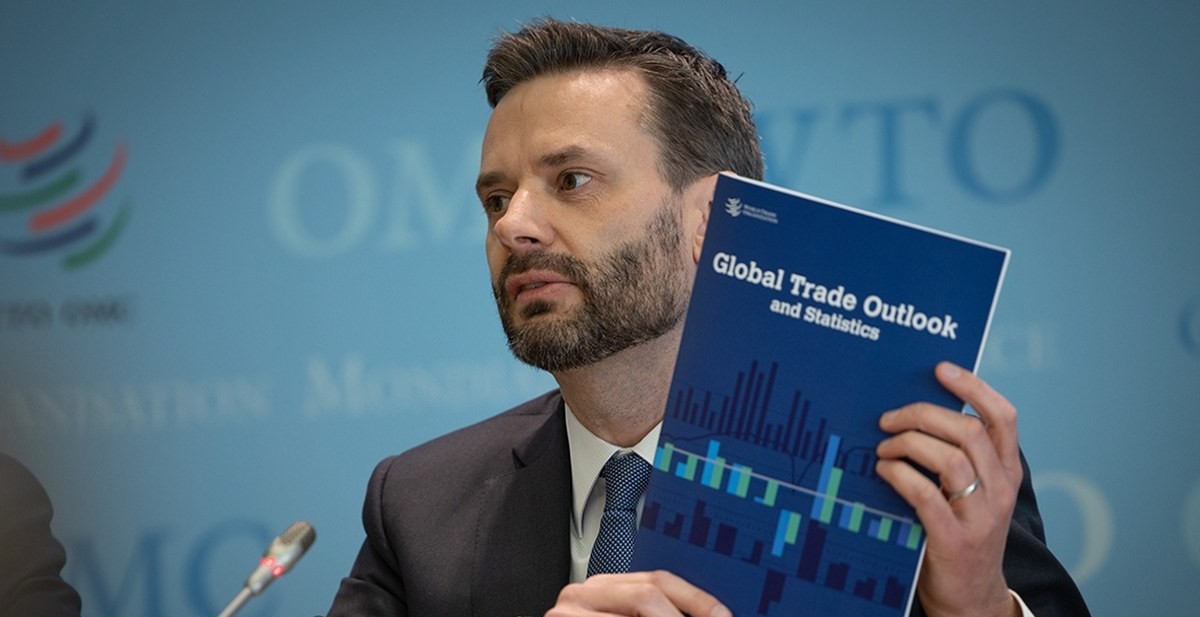“Subpar” global trade growth projections

WTO outlook warns of trade ‘under pressure’
By Carly Fields
World trade growth is forecast to slow this year, falling from 2.7% in 2022 to 1.7%, according to the World Trade Organisation, as a smaller-than-expected increase was eroded by a “sharp slump” in the fourth quarter.
In its latest trade projection report, Global Trade Outlook and Statistics, the WTO noted that 2023 global trade growth is expected to be “subpar” despite a marginal upgrade to gross domestic product projections since Q3 2023. Real global GDP growth is pitched at 2.4% for 2023. Projections for both trade and output growth are below the averages for the past 12 years of 2.6% and 2.7% respectively, according to the WTO.
WTO director-general Ngozi Okonjo-Iweala said: “Trade continues to be a force for resilience in the global economy, but it will remain under pressure from external factors in 2023. This makes it even more important for governments to avoid trade fragmentation and refrain from introducing obstacles to trade. Investing in multilateral cooperation on trade, as WTO members did at our Twelfth Ministerial Conference last June, would bolster economic growth and people's living standards over the long term.”
The WTO forecasts are weighed down by the effects of the war in Ukraine, high inflation, tighter monetary policy and financial market uncertainty. Of note, the Q4 2022 slump was further influenced by elevated global commodity prices, monetary policy tightening in response to inflation, and outbreaks of Covid‑19 that disrupted production and trade in China.
The WTO’s Global Trade Outlook and Statistics analyses recent global trade developments up to the fourth quarter of 2022 and present the WTO’s forecasts for world trade in 2023 and 2024.
Trade continues to be a force for resilience in the global economy, but it will remain under pressure from external factors in 2023
No cause for complacency
Trade growth of 2.7% in 2022 was, in the end, in line with the 2.4% to 3.0% baseline scenario from the WTO's March 2022 initial report on the war in Ukraine, and well above its pessimistic scenario, which warned of trade growth of just 0.5% on the prediction of countries splitting into competing economic blocs. “In the event, international markets remained broadly open,” the WTO said.
This, however, should not be “cause for complacency,” warned the WTO. “Several factors contributed to the trade slump in the fourth quarter of 2022, the most conspicuous being the rise in global commodity prices. Although food and energy prices had receded from their post conflict peaks by Q4, they remained high by historical standards and continued to erode real incomes and import demand.”
The report added that the impact of energy prices was strongest during the winter months in Europe, where gas supplies from Russia were cut off, while high prices for wheat and other grains were also keenly felt in Middle Eastern and African countries that relied heavily on imports from Ukraine and Russia before the war.
WTO chief economist Ralph Ossa said: “The lingering effects of Covid-19 and the rising geopolitical tensions were the main factors impacting trade and output in 2022 and this is likely to be the case in 2023 as well. Interest rate hikes in advanced economies have also revealed weaknesses in banking systems that could lead to wider financial instability if left unchecked. Governments and regulators need to be alert to these and other financial risks in the coming months.”
While the 2023 trade growth forecasts have slipped, they are up from the previous estimate of 1% from last October. “A key factor here is the relaxation of Covid-19 pandemic controls in China, which is expected to unleash pent-up consumer demand in the country, in turn boosting international trade,” said the WTO.
Particular risks that could negatively affect this forecast include the vulnerabilities revealed in the banking sector of late
Better times coming
Looking ahead to 2024, trade growth is expected to rebound to 3.2%, alongside a GDP increase to 2.6%, said the WTO. However, this estimate is described as “more uncertain than usual” because of substantial downside risks. These include food supply shocks, geopolitical tensions, and the possibility of fallout from monetary tightening. Additionally, “these figures should be interpreted with caution since they are highly dependent on the course of the war in Ukraine,” said the WTO.
“Particular risks that could negatively affect this forecast include the vulnerabilities revealed in the banking sector of late. The impact of recent bank failures in the United States and Europe mostly appears to have been contained, but a rapid rise in interest rates is bound to create strains in financial markets that could weigh on trade,” added Ossa.
The Asia Pacific region could prove to be a bright spot in the global trade picture. In its April 2023 Asian Development Outlook, the Asian Development Bank forecast that economies in the region will grow 4.8% this year and next year, an increase on the 4.2% growth rate in 2022. Excluding the People’s Republic of China, developing Asia is predicted to grow 4.6% this year and 5.1% in 2024.
“Prospects for economies in Asia and the Pacific are brighter, and they’re poised for a strong recovery as we return to normalisation following the pandemic,” said ADB chief economist Albert Park. “People are starting to travel again for leisure and work, and economic activities are gathering pace. Because many challenges remain, governments in the region need to stay focused on policies that support stronger cooperation and integration to promote trade, investment, productivity, and resilience.”